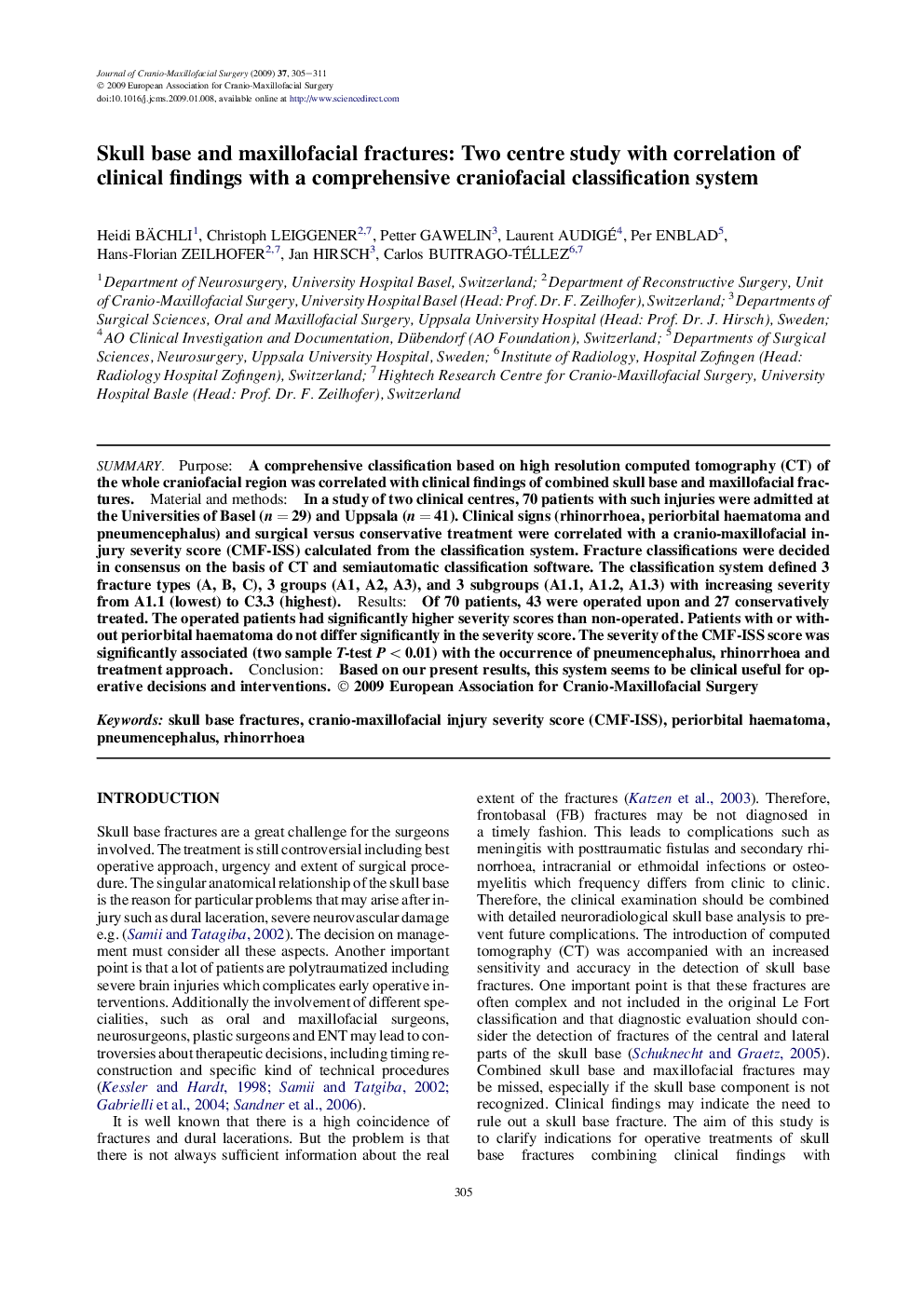| Article ID | Journal | Published Year | Pages | File Type |
|---|---|---|---|---|
| 3144145 | Journal of Cranio-Maxillofacial Surgery | 2009 | 7 Pages |
SummaryPurposeA comprehensive classification based on high resolution computed tomography (CT) of the whole craniofacial region was correlated with clinical findings of combined skull base and maxillofacial fractures.Material and methodsIn a study of two clinical centres, 70 patients with such injuries were admitted at the Universities of Basel (n = 29) and Uppsala (n = 41). Clinical signs (rhinorrhoea, periorbital haematoma and pneumencephalus) and surgical versus conservative treatment were correlated with a cranio-maxillofacial injury severity score (CMF-ISS) calculated from the classification system. Fracture classifications were decided in consensus on the basis of CT and semiautomatic classification software. The classification system defined 3 fracture types (A, B, C), 3 groups (A1, A2, A3), and 3 subgroups (A1.1, A1.2, A1.3) with increasing severity from A1.1 (lowest) to C3.3 (highest).ResultsOf 70 patients, 43 were operated upon and 27 conservatively treated. The operated patients had significantly higher severity scores than non-operated. Patients with or without periorbital haematoma do not differ significantly in the severity score. The severity of the CMF-ISS score was significantly associated (two sample T-test P < 0.01) with the occurrence of pneumencephalus, rhinorrhoea and treatment approach.ConclusionBased on our present results, this system seems to be clinical useful for operative decisions and interventions.
